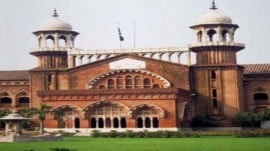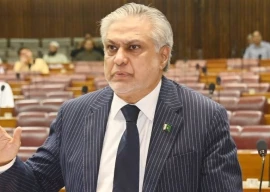
The US ambassador in Kabul has said something that foreshadows the nature and extent of the coming conflict: “The Taliban are really good at issuing statements, less good at actually fighting. My guess, based on experience here, is this a set of Haqqani network operations out of North Waziristan and the Pakistani tribal areas. Frankly, I don’t think the Taliban are good enough.”
Of course, Islamabad will and should vociferously deny any such accusations, if they are made publicly and officially. The problem, however, is that the world stopped believing what we say on the issue of safe havens, the nature and scope of the engagements of the Haqqani network and the Afghan Taliban in general, a long time ago. The way the Afghan Army fought back on April 15 signals yet another future calamity for Pakistan: additional non-state actor warriors will be required to engage in a cross-border war, which may not be an accurate repeat of the victory over the Soviet Union. Pakistan still has to comprehend the ‘victory’ over the Soviet Union that it facilitated by supporting the mujahideen in rejecting pre-withdrawal talks. The blowback from this ‘victory’ transformed Pakistan while it broke up the Soviet Union. It would be a misdiagnosis to say that Pakistan progressed after that if one looks at the instability and violence that held the country hostage. Now, as the Taliban stand at the portals of another ‘victory’, they may be seen as delivering a coup de grace to Pakistan’s fragile internal order where terrorism has taken a daily toll of human life. And the possibility is that this ‘victory’ may not follow the lineaments of the American defeat in Vietnam and the Soviet one in Afghanistan.
Pakistan is internationally isolated. Even as it claims that it is no longer interested in ‘strategic depth’ vis-a-vis Afghanistan, its non-state actors are not in its control and are openly agitating in favour of war. On the other hand, the Afghan National Army (ANA) that the US is leaving behind is 250,000 strong — the largest ever in the country’s history. The last big army was fielded by the post-Soviet withdrawal ruler Najibullah: it was just 43,000-strong and it defeated the mujahideen at Jalalabad. At the peak of their rule in Afghanistan, the Taliban had just 25,000 soldiers. Today, the ANA is dominated by the Northern Alliance and it is going to fight till it is internally fissured and gives up. Unlike the post-Soviet withdrawal situation, this time the US will be there to back the ANA with drones and other assistance. The warriors will have to go from Pakistan to match the numerical strength of the ANA, and it will not be the Afghan Taliban alone resting in the safe havens of North Waziristan. The Haqqani network controls the Pakistani Taliban, the Punjabi Taliban and a number of al Qaeda-related warriors. In addition, the non-state actors will come together from all corners of Pakistan, seeking strength from isolationism. The blowback from this ‘victory’ — which means the establishment of another Taliban government in Kabul — may be beyond the capacity of Pakistan to endure. One documentary shown by a leading TV channel of Pakistan last week, predicted that this ‘victory’ will stretch across Pakistan and may inflict territorial loss on the state. Already the state of Pakistan is helpless to control acts of terrorism in vast stretches of its territory.
Published in The Express Tribune, April 17th, 2012.
COMMENTS (4)
Comments are moderated and generally will be posted if they are on-topic and not abusive.
For more information, please see our Comments FAQ







































Playing up the capabilities of the ANA is a patently false narrative. Reports of NATO helicopters and Norwegian special forces helping the ANA is well-documented. Ironic that the american ambassador said what he said, all the while talking inside a basement bunker. There are also doubts about the tall claims of the ANA regarding its losses or reportedly lack-there-of. Twitter and personal accounts say that they say bodies of dead ANA and ANP being carried away. There is obviously going to be an information war, with the government of Afghanistan putting on a brave face. That number of over 200k is coming down, as neither Afghanistan nor US/Nato have the ability to maintain an "army". Given that a large number of the ANP and ANA are going to be joining the Afghan national resistance, it's not as clear-cut as ET wishes it to be. Civil war will follow, which might even be a good thing.
@Salim Ansari
Indian embassy not targeted. Think about it. RAW is behind this attack.
A. Pakistan Embassy was also not attacked.Indian Embassy was attacked on two earlier occasions.
B. 400 Terrorists were released from Bannu prison, just before this attack.
C. We all know where the Quetta Shura and the Haqqanis are.
Now you know who is behind this attack.
Excellent, brilliant out of the box thinking Mr Ansari. The scenario projected by the editorial is not too far way for Pakistan with people like you.
Indian embassy not targeted. Think about it. RAW is behind this attack.